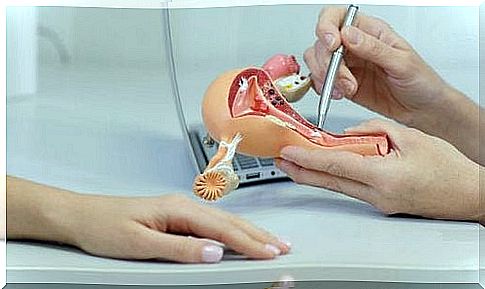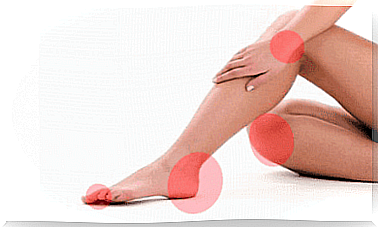Polycystic Ovary And Various Treatments

Medical staff typically use the term polycystic ovary to refer to an alteration of the female reproductive system. As a rule, it develops in women still of childbearing age. Let’s see together what polycystic ovary is and the different treatments.
Women with polycystic ovary syndrome have fibrous structures within the ovary that can produce hormonal changes. As a result they usually have high levels of androgens (hormone associated with men) such as testosterone and androsterone, among others.
This hormonal imbalance causes several symptoms. If the disorder is not treated properly, more serious complications can develop over time. Find out in more detail what polycystic ovary is and how it can be treated.
What is Polycystic Ovary
Symptoms

The most frequent symptoms associated with polycystic ovary syndrome are:
- Changes in the menstrual phases. They can refer to the periodicity, duration and intensity of this phase.
- Infertility or difficulty conceiving.
- Increased facial hair. It is also called hirsutism and can appear in other areas of the body.
- Acne development which can vary in severity.
- Hair loss that has the characteristics of male pattern baldness.
On the other hand, polycystic ovary syndrome is closely associated with overweight or obesity. This factor also contributes to the worsening of symptoms and the appearance of new complications such as:
- Alterations during pregnancy. It is usually associated with gestational diabetes and hypertension.
- Sleep disorders. Above all, sleep apnea.
- Type 2 diabetes.
- Hemorrhage inside the uterus.
- Changes in the subject’s behavior.
- Other diseases such as uterine cancer or metabolic syndrome, although with a very low probability.
Specialists have not been able to pinpoint an exact cause or trigger for this syndrome. However, several factors associated with the development of this disorder have been indicated. In each case, several changes occur in the proper functioning of the ovaries.
Mature eggs are not expelled into the external environment during the menstrual cycle. In addition, the ovaries have small accumulations of fluid called follicles.
Treatment for the polycystic ovary

Nowadays, the medical staff have different treatments in case of polycystic ovary. Based on the characteristics of the person and the severity of the syndrome, the most appropriate method is chosen.
In any case, it is important for the patient to inform the specialists about the drugs usually taken. Lifestyle, hypersensitivity or allergies and alterations undergone should also be checked. In this way, among the most used treatment guidelines today we can find:
- Controlled weight reduction. It is recommended that you follow a balanced diet and play sports.
- Administration of medicines. Endocrine symptoms related to PCOS can be treated. Among the most used drugs we can highlight:
-
- Birth control pills. They are able to regulate hormone levels because they contain estrogen and progesterone in their composition. They can regulate menstruation and uterine bleeding. They also reduce the chances of suffering from certain diseases such as uterine cancer.
-
- Chemical compounds with progesterone. Like contraceptives, they help regulate menstrual cycles and are a form of prevention against uterine cancer.
- Treatments for excessive hair growth, or hirsutism.
- Electrolysis. It is a technique in which the follicles of the ovaries are destroyed. For this, several sessions are required in which a needle emits a small amount of electric current to the problem area.
We hope this article has been helpful to you and has resolved some of your doubts about polycystic ovary syndrome and how it is treated. On the other hand, we always advise you not to hesitate to contact your doctor to resolve all other questions relating to the subject.









